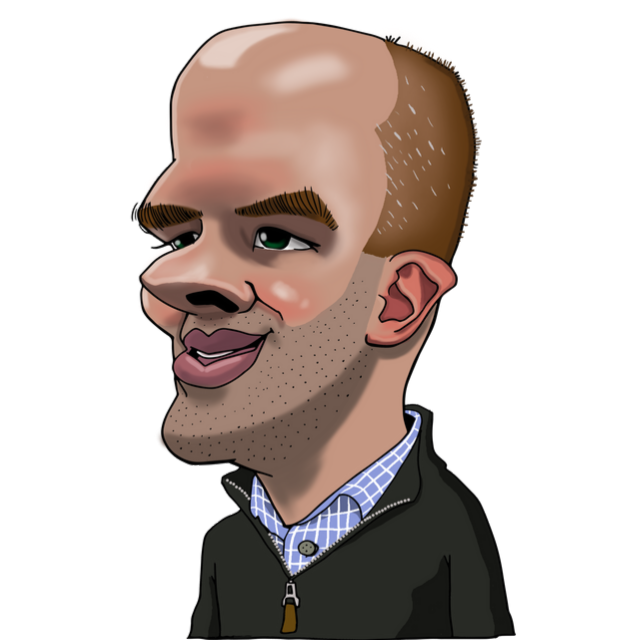Automatic Rebalancing: It's All the (Road) Rage
%20-%20Guy%20in%20Car%20with%20Banana%20-%20PNG%20-%202-25-2020.png?width=945&name=Image%20-%20Blog%20Image%20-%20Andy%20-%20Automatic%20Rebalancing%20(Updated)%20-%20Guy%20in%20Car%20with%20Banana%20-%20PNG%20-%202-25-2020.png)
We've all been there: stuck in congested stop-and-go traffic on the highway. You find yourself in a lane that's moving along pretty well, as compared to the others. You start thinking: should I stay in this lane for a while longer or change lanes while I'm ahead and before another lane gets its turn? While you are debating this with your spouse, you notice that guy a quarter-mile up ahead. He's weaving in and out of lanes, aggressively attempting to get ahead of the entire pack by changing whenever he sees an opportunity to possibly gain a car length. He's a high-frequency lane changer. You flag his car in your mind, and five minutes later: you slowly pass him.
In the investing world and in your portfolio, rebalancing an account too often can have costs too, just like that guy's driving. In the driving world, a freeway with very little traffic will allow you to change lanes almost any time, without the need to find your gap, check your blind spot, adjust your speed, etc. As the investing world has adopted lower commissions on many securities and lists of commission-free mutual funds and ETFs, the marketplace has made it easier to change lanes in your portfolio.
There are even firms out there that will enable you to create a portfolio that rebalances automatically. You set your desired allocations to a bunch of ETFs (a non-trivial task in itself!), and it will rebalance any time those allocations get out of whack, even as often as daily. For example, if the price of oil falls today and the Energy Sector ETF you own is down 3% while the rest of the market is slightly up, the computer will sell a little of all your other holdings and buy some of the Energy ETF to get it back to your target allocation. Then tomorrow, when the price of oil rebounds some and Apple misses earnings, the computer will sell your Energy ETF (which is now above target) and buy the Technology ETF (whose allocation was dragged down by Apple's negative performance). This is all well and good if you can buy and sell these ETFs for free, and the commission-free list gets you a long way there, but what about the bid-ask spread?
In case that term just lost you, let's go to another car metaphor. If you've ever traded in a car at the dealership, this will probably feel familiar. You look up the value of your car online and get quoted ~$12,000, but when you go to dealership to trade it in, they only offer you $10,000. You take the offer, since you don't want to deal with the hassle of finding another buyer. Two weeks later, you check the dealership's website on a whim. There is your car, looking a little cleaner, and priced at $13,000! In the market for your old car, the dealer is the market maker, the bid (the market maker's buying price) is $10k, and the ask (the market maker's selling price) is $13k. The dealership needs this bid-ask spread to stay in business.
Now, imagine what would happen if you bought your old car back from the dealer. Then sell it back to them again. Now buy it back again. If the bid-ask spread were $0, this would be fine (if not silly), but at $3k per round trip, this gets expensive fast. This is exactly what is happening to your automatically rebalanced portfolio if you are using ETFs with large bid-ask spreads. "Large" is a subjective term, but all else being equal, you should prefer an ETF with low spread over one with a high spread. The tricky part is that these spreads can change over time, even by the second! Add in that the ETF that usually has the lowest bid-ask spread might have an expensive annual management fee or might not trade commission-free. This is dynamic market you're dealing with, not just your Ford Fusion. So what is a prudent driver/investor to do?
Change lanes when it makes sense to, not just because you can. Automated rebalancing (whether executed by a computer with proper inputs from you or performed by a human you choose) is a very useful tool for the investor that has other things to worry about, but automatic rebalancing is blind to the costs raised by the dreaded bid-ask spread. You want to pick the securities that strike the right balance of the issues raised above, and then set upper and lower limits that indicate when it might make sense to rebalance parts of the portfolio. I find that sort of exercise intriguing, but I'm nerdy in that respect. If you're like me, go have some fun; if you aren't, find some help. Whatever you do, don't be that guy.
Andrew Stewart, CFA is a Senior Portfolio Manager at Exchange Capital Management. The opinions expressed in this article are his own.
Comments
Market Knowledge
Read the Blog
Gather insight from some of the industry's top thought leaders on Exchange Capital's team.
Exchange Capital Management, Inc.
110 Miller Ave. First Floor
Ann Arbor, MI 48104
(734) 761-6500
info@exchangecapital.com




